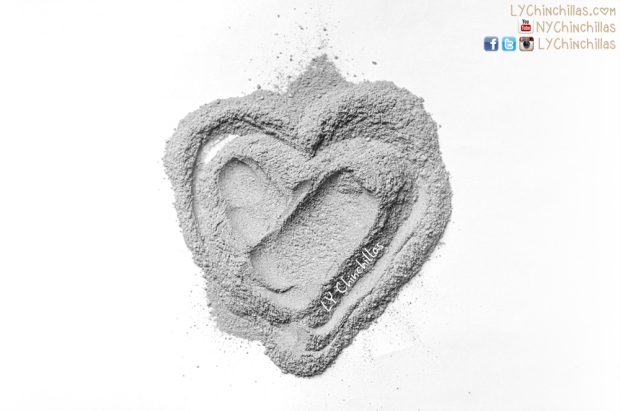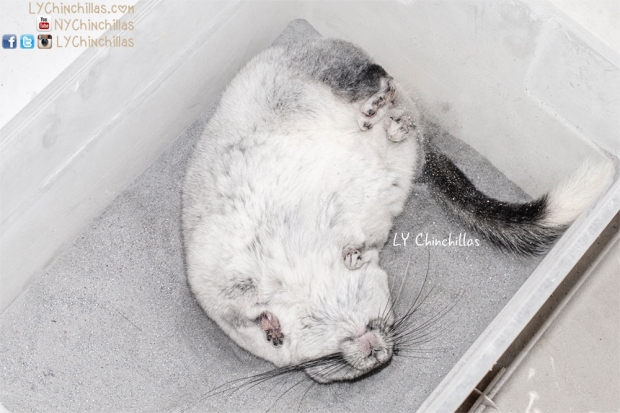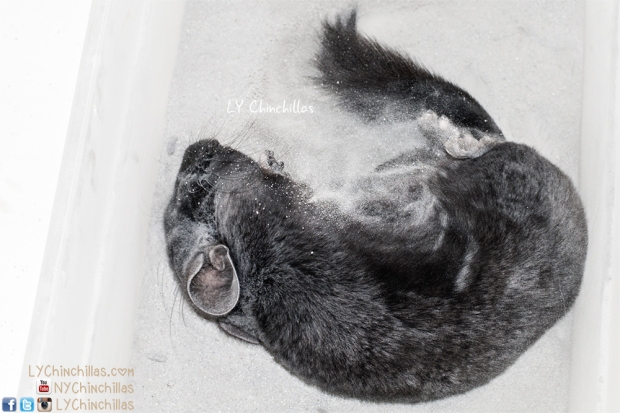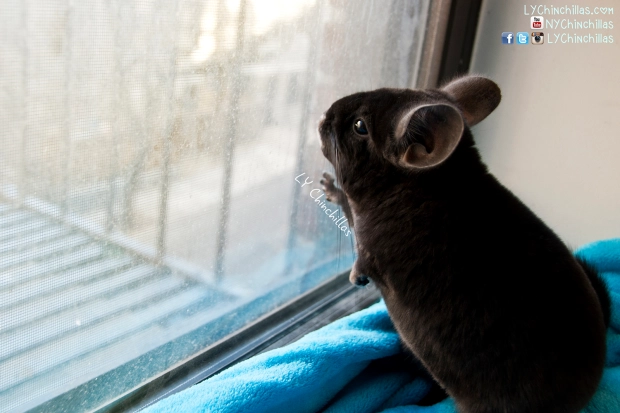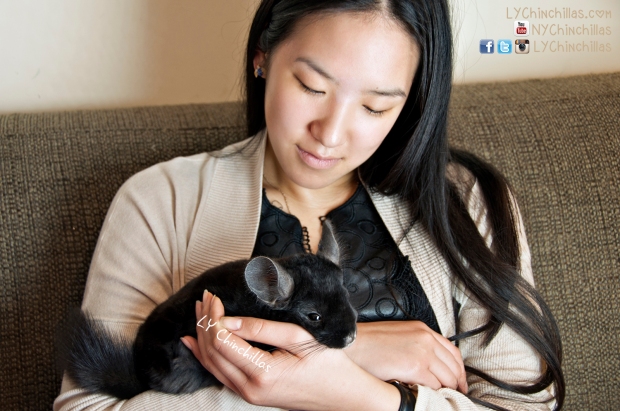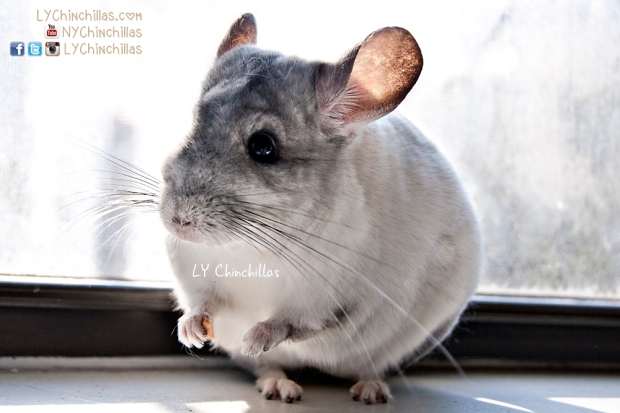As a chinchilla owner, sometimes the world beckons you away from the life of a stay-at-home chin-slave guardian. When the sweet oceanside breeze or faded sirens of some delightful foreign city tug at your heartstrings, you begin to remember what life was like before owning a chinchilla.

All the feeding, cleaning, dusting, weighing, and constant bonding efforts can get overwhelming at times – not to mention the cage building, cage purchasing, DIY cage accents and hanging toys, cookie making, perpetual safeguarding against plastic, hefty air conditioning/dehumidifier bills, and constant provision of chin-safe chews, occasional chin-proofed playtimes, and continual supply of soft entertainment. And if you think that’s a handful, it’s just the start! For very loving chin-owners, chinchilla ownership is a way of life and chinchilla care and parenthood is just as much a part of your daily routine as work, friends, or school! They’re family! Honestly, caring for a chinchilla properly is time, energy, and money-consuming, but that smug smile on their fat, furry faces is worth every ounce of trouble! For new or potential owners, just go ahead and skip to our post all about chinchilla care basics to gather a light gist of what your fluffy workflow will be like.

So, back to that wanderlust dreamscape: island sunrise, countryside mountaintop, or city retreat. Maybe you’re thinking of leaving for a weekend, or flying off for a few weeks – after all, you’re a hardworking chin-parent, you deserve it! What’s the best course of action when you can’t take your babies with you? Let’s chat about chin-sitters! Inevitably, at some point in your chin’s very long and happy life with you, you will likely have to leave your beloveds in the care of a third party. This post is all about how to select and direct the perfect chinchilla sitter, and make sure your fluffs are well-cared for in your bittersweet absence.

Step 1: Find your potential sitter. I’m lucky: I have an incredible family that lives close and are well-versed with my chinchilla obsession – they’ve endured endless lectures from me on chinchilla health and safety. Ideally, a family member or very close friend would be the best choice – someone who lives nearby, so you always have a reachable emergency contact. It’s best to find a sitter well in advance, as it’s all about availability and suitability.

Step 2: Provide all necessary information to your sitter. I make a very thorough document touching on all major points, as well as directing them to this blog to find additional information. Of course, they can contact me at anytime through any social media platform, phone, or email in order to obtain additional information. Adding in the number of your exotic vet is always a great move, too. I always try to drive home the idea that this incredibly important document will be their chinchilla bible for the duration of their stay. Instructions should typically be much more conservative than the way you care for your chins, taking into account the differentiation in familiarity and knowledge of your particular chinnies.

Step 3: Test your potential sitter. After allowing sitters to review information, I’ll invite them over each day for several days in order to test their ability to handle, feed, dust, and care for the chins. I typically skip imposing the daily weighing routine while I’m away, as it is more involved than the other care elements and requires a deeper understanding of each chinchilla in order to successfully weigh them. I’ll always ask a few questions as I watch them work, including a few “what if” situations for good measure.
I was asked recently about why my playtime rules are so conservative. To elaborate, I’m all about playing it safe with my babies – especially given new circumstances, people, or events. Too many things can go wrong if your sitter isn’t completely trained for playtime, so I err on the side of caution. Every chinchilla is unique, and some are crazier than others (cough, Muff!); each new variable equates to a slew of new, potentially harmful results. Playtime is, in general, optional based on the opinion of each chinchilla owner. Additionally, playtime is not crucial in any means to a chin’s general health, so skipping a few sessions couldn’t possibly hurt them. On the other hand, overheating, fur slip, stress, or injury could. The most nightmarish situation I could think up would be a chinchilla injury occurring while I’m not home with no concrete proof of how, why, or when. I’d personally wait until I was home to conduct any playtimes, but everyone is different! Who knows, you could know a true chinchilla guru – but that would still be a risk you’d have to be willing to take as a responsible pet owner.

Step 4: Buy a webcam! This is a great piece of technology that every chinchilla owner should buy, as it captures what your chin-sitter may neglect. I position the cam between the cages and angle the cages so I can see everything: water bottles, hay feeders, pellet bowls, and so on. Additionally, I’ll always position my thermometer close enough to the webcam in order to monitor their environment from afar. I have a webcam that’s easy to check via phone and even allows me to coo or sing to them from another zip code!

Step 5: Check in with your sitter every day. Text, call, or email! A short catch-up on your chin’s day is always in order. Of course, you can also inquire about how your sitter is doing! 😛
Step 6: Pay your sitter (with friendship, or money). Payment for quality service is always a gesture of goodwill. 🙂 Unless we’re talking family – in that case, put it on the communal tab.

Step 7: Keep in contact and repeat as needed! As the sourcing part of this process can be quite intense, it’s best to maintain great relations with your chin-sitter and keep in touch, as you never know when your travel bug will catch up with you again.

There you have it; the 7 steps to take when selecting and utilizing a chinchilla babysitter. Of course, use your sitters as sparingly as possible: chin-sitting is time and energy consuming, and only you know your chins best! 🙂 As with all exotic pets with specific needs, chinchillas require very willing and knowledgeable sitters, but most pet lovers can be trained with adequate time and accurate information over time. Happy travels, chin-lovers – and make sure your lovely fluffs are safe at home for when you return!

LY Chinchillas Treat Donation
Donate healthy, delicious treats to LY Chinchillas to help keep our content going!
$5.00













